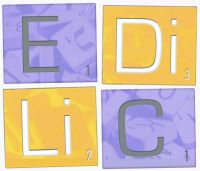Speaker
Description
This presentation focuses on findings from an on-going study that explores practices in primary and secondary schools across Aotearoa New Zealand (henceforth Aotearoa) to develop plurilingual learners’ literacy and ways of their integration into schools. Student numbers from linguistically diverse backgrounds in schools in Aotearoa and worldwide have rapidly increased, pushing plurilingual literacy development to the forefront of educators’ attention to provide those students with equitable access to the curriculum.
Prior research indicates that teachers are key agents in integrating plurilingual learners (PLL) and in student achievement, but their attitudes and preparedness to teach PLLs vary according to beliefs of responsibility and culturally responsive teaching. Two models often employed to support PLLs in schools are a ‘push-in model’ and a ‘pull-out model’. A push-in model is often privileged as being a more “inclusive” one where two teachers work collaboratively within the mainstream classroom, however, research also indicates that PLLs may make greater gains in the pull-out model, where students get taught by a specialist teacher separate from their classroom routine, as the teacher could focus more exclusively on their language skills.
Based on data gathered through semi-structured interviews (n=24) with classroom and specialist teachers as well as school leaders from primary and secondary schools, we show the dominance of the pull-out model, exemplify reasons for its preference by schools and present teachers’ perceptions of it. School leaders highlight procedures of integrating PLLs and developing their literacy, ranging from communication structures within the school to developing home–school relationships and outline challenges ranging from sheer numbers of PLLs, policy and wider community involvement. The study contributes to enhancing our understanding of the complexity of educating PLLs and highlights the importance of teacher education and a whole school approach in providing effective, sustainable, and equitable education for PLLs.
Content/contenu/Inhalt 2
Diese Präsentation konzentriert sich auf Ergebnisse einer laufenden Studie, die Praktiken zur Entwicklung von Plurilingual Literacies in der Primar- und Sekundarstufe Aotearoa Neuseelands (im Folgenden Aotearoa) untersucht. Die Zahl der mehrsprachigen Lernenden ist an Schulen in Aotearoa sowie weltweit rapide gestiegen, was die Förderung von Plurilingual Literacies in den Fokus von Pädagog:innen rückt, um diesen Lernenden einen gerechten Zugang zum Lehrplan zu ermöglichen.
Bestehende Forschungsergebnisse bestätigen die zentrale Rolle der Lehrenden bei der Integration und dem Schulerfolg plurilingualer Lernender (PLL). Inwieweit Lehrende sich PLL widmen, hängt jedoch damit zusammen, ob dies als Teil der jeweiligen Rolle empfunden wird und ob Lehrende mit kultursensiblem Unterricht vertraut sind. Zwei häufig angewandte Modelle zur Unterstützung von PLL sind das „Push-in-Modell“ und das „Pull-out-Modell“. Ersteres wird oft als besser angesehen, da zwei Lehrkräfte zusammen im regulären Unterricht arbeiten. Allerdings zeigen Forschungsergebnisse auch, dass PLL im Pull-out-Modell, in dem die Lernenden separat von einer Speziallehrkraft unterrichtet werden und sich diese auf ihre Sprachkenntnisse konzentrieren kann, möglicherweise größere Fortschritte erzielen.
Basierend auf Daten aus halbstrukturierten Interviews (n=24) mit Klassen- und Fachlehrkräften sowie Schulleitungen an Grund- und Sekundarschulen, zeigen wir die Dominanz des Pull-out-Modells, erläutern Gründe für dessen Bevorzugung an Schulen und stellen Wahrnehmungen der Lehrenden dazu dar. Vertreter der Schulleitung heben Prozesse zur Entwicklung von Plurlingual Literacies hervor, die von Kommunikationsstrukturen innerhalb der Schule bis hin zur Entwicklung von Beziehungen zwischen Schule und Elternhaus reichen. Sie skizzieren ebenfalls Herausforderungen wie die hohe Anzahl von PLL, Aspekte der Sprachpolitik und die Einbeziehung der weiteren Schulgemeinschaft. Die Studie trägt dazu bei, unser Verständnis für die Komplexität der Bildung von PLL zu vertiefen und betont die wichtige Rolle der Lehrendenweiterbildung sowie eines schulweiten Ansatzes, um eine effektive, nachhaltige und gerechte Bildung für PLL zu erreichen.
| Title/ titre/Titel 2 | Plurilingual Literacies in Schulen Aotearoa Neuseelands: Praktiken und Herausforderungen |
|---|

